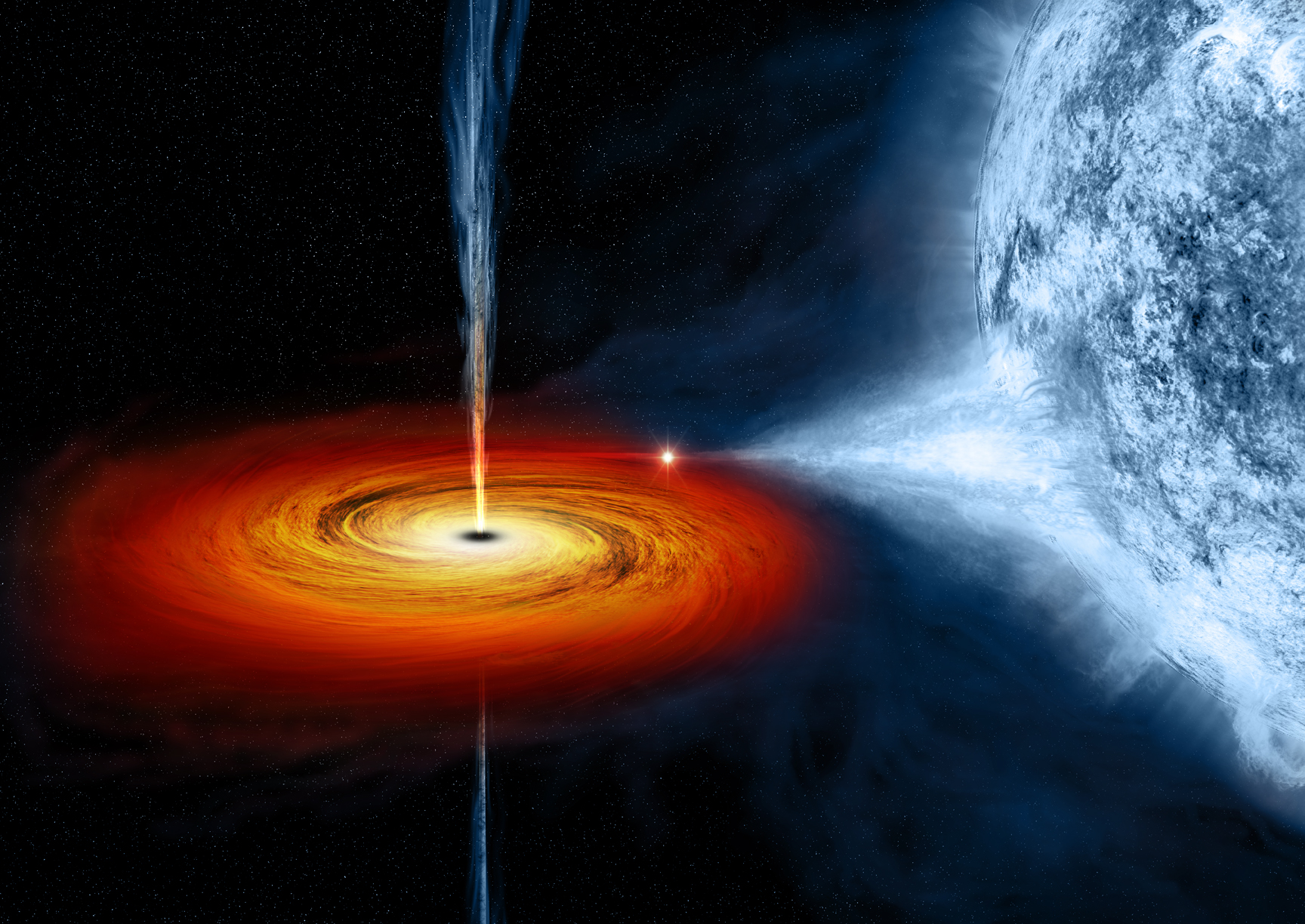Visualisation of a black-hole system like 4U1630-47: a stellar-mass black hole being “fed” by a companion star.
(Image: NASA / CXC / M. Weiss)
Astronomers have just learned a little more about what’s in the jets from a ‘typical’ black hole. Specifically, they have found the first evidence of heavy atoms — iron and nickel — in the jets from a black hole known as 4U1630-47.
So what? Well, black hole jets recycle energy back into the galaxy. They can affect when and where stars form. So they help to determine how a galaxy evolves over time.
The first of these jets was seen in 1918 by astronomer Heber Curtis, sticking out from a galaxy called M87.
At the time, its cause was a mystery. But we now class it as one of the many, many jets generated by supermassive black holes in galaxies.
The jet from galaxy M87, photographed by the Hubble Space Telescope. Image Credit: J. A. Biretta et al., Hubble Heritage Team (STScI /AURA), NASA
Some jets are visible to optical telescopes, but many more can be seen with radio telescopes.
Jets emerging from galaxy B1545-321: a radio image made with CSIRO’s Compact Array telescope.
But how can black holes make jets? Don’t black holes swallow everything within reach?
Our understanding is that black holes are messy feeders.
Black holes are messy feeders: not all the food goes in. Photo: iStock
A black hole squats in the centre of a swirling garbage dump of smashed-up stars and ripped-apart gas clouds — the matter it has dragged towards it. This is called its accretion disk.
Every so often some of this material goes down the gurgler. But a bit of it is swept up and blasted out into space, as jets.
That’s the basic idea. But jets have posed many questions: exactly how they are launched, what’s in them, how they stay together as jets over long distances, what causes them to turn on and off, how much energy they deliver, and exactly what effects they have on the galaxies the black holes live in.
The new work has implications for a few of these questions.
First: what’s in the jets?
We already knew that the jets must contain electrons. It’s those that give off the radio waves that radio telescopes detect.
But electrons are negatively charged particles. The jets are neutrally charged, so there must be some positive charges in there somewhere.
Those positive charges could be positrons (light particles like electrons), protons (about 2000 times more massive than electrons), or atomic nuclei (protons and neutrons together).
What the scientists have found is the latter: atomic nuclei of iron and nickel. That doesn’t mean that they are the only positively charged particles there, just that these nuclei make up some of them.
That matters for the next question: how much energy do the jets deliver?
Which would you rather be pelted with, ping-pong balls or golf balls? Ping-pong balls hurt less when they hit you. Why? Because they are lighter, less massive. They carry less energy. (That’s assuming they and the golf balls are travelling at the same speed.)
The black hole 4U1630-47 is firing out the equivalent of golf balls, rather than only ping-pong balls. Which means its jets have more impact on their surroundings than if they contained only light particles such as electrons and positrons.
The third question was: how are the jets launched?
The discovery of atomic nuclei suggests that jets originate from, and are powered by, the black hole’s accretion disk. Jets powered by the spin of the black hole itself would be more likely to produce jets containing only light particles (electrons and positrons). We still don’t have all the details of the launch mechanism, though.
And a final word of wisdom on black holes:
Black holes are like cockroaches: Once you find one or two, you know there are hundreds, thousands ….
– Joseph Dolan, NASA Goddard Space Flight Center, in a radio interview for PBS Talk of the Nation, 19 Jan 2001 (source)
Publication
Trigo MD, Miller-Jones JCA, Migliari S, Broderick JW, Tzioumis T. 2013. Baryons in the relativistic jets of the stellar-mass black-hole candidate 4U1630-47. Nature, 14 November 2013. doi:10.1038/nature12672.





